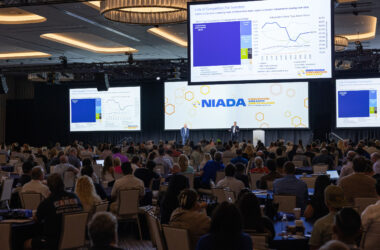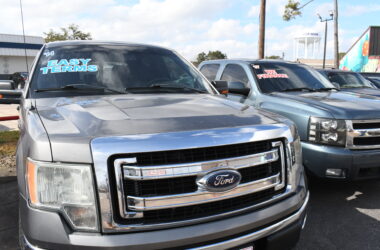Throughout 2021 we saw significant changes when it came to car sales. Everything from inventory shortages to the rising price of used cars. But what will happen this year, and what does 2022 have in store for us? Cox automotive looked at the data, and in a recent webcast made the following predictions:
1. Vehicle Demand Will Remain Strong Through the First Half of the Year
The demand for both new and used vehicles is strong, and as the economy recovers, it is expected to remain so through the first half of the year. The impact of the inventory issues of 2021 meant some buyers did not get the vehicle of their dreams and are eagerly awaiting the delivery of new models to lots everywhere.
2. Used Vehicle Values will Depreciate After Spring
As the new car inventory recovers the value of used vehicles will depreciate and return to more normal levels after spring. While last year saw a huge spike in demand and a limited supply, a likely market correction this year will see things go back to a more “normal” feel.
3. Vehicle Supply Issues will Gradually Improve
From the chip shortage to cargo ships queued to unload, we saw vehicle supply issues dominate the industry, but as the chip shortage is eased and steps are taken for domestic automakers to rely less on sources from overseas, those supply issues will gradually improve. This is good news for consumers and for dealers who often faced “empty lot syndrome.”
4. EV Growth Will Outpace Industry Growth
With consumer interest at an all-time high, battery improvements happening rapidly, and even coming state regulations, EV market growth is rising and will continue to do so, eclipsing the overall industry growth in 2022. This pattern will only continue its upward swing, and dealers and consumers alike should be prepared.
5. Auto Loan Rates will Increase
While it makes the stock market somewhat unstable for a few moments, the Fed has already stated they will raise interest rates this year to combat rising inflation. This means auto loan rates will increase at a similar rate. How much? Well, that depends on how many times the Fed raises rates, anywhere from 4 to 7 times this year.
6. Lease Demand Rates Will Improve
When purchasing interest rates go up, so does the demand for lease options. At the same time, as inventory improves, so will the number of vehicles available to those interested in leasing them. As a result, the demand for leases will go up this year, climbing even more toward the end of the year as inventory issues resolve.
7. Service Revenue Potential Remains Strong
The price of used cars went up and many people could not find newer vehicles, so more than ever they are choosing to keep and fix older vehicles rather than trading them in. This means that the revenue potential of service departments remains strong. Everything from repairs to regular maintenance and warranty work can result in a profitable service department that provides a strong income source for most dealers.
8. Dealership Consolidation Will Continue
The future of car shopping from the consumer side means fewer dealerships and larger conglomerates. Most dealerships (59%) expect consolidation to continue, and the market remains hot in that space. As smaller dealerships struggle with administration and other costs, larger companies that can more easily absorb costs take over. This year will be filled with such deals.
9. Online Car Buying will Become Dominant
Consumers want to buy cars online. The long maligned “dealership experience” has changed, and consumers are more interested in streamlining the process as much as possible. The COVID era only served to show them and dealers just how possible modern technology makes this.
Consumers will continue to switch to online shopping and buying, often completing the purchase process without ever leaving home. Augmented reality, simulated test drives, and more will force innovation in the marketplace.
10. Direct to Consumer Trends Will Cause Dealers to Adapt
Along with the online car-buying trend is the Direct to Consumer (DTC) trend in car buying, and 80% of dealers think eCommerce will be extremely prevalent. That means that dealers need to start implementing eCommerce solutions now, or risk being left behind.
NIADA Looks to the Future
Of course, these are just a few of the many predictions for 2022. NIADA stays on top of new industry trends, best practices, and actionable insights to help improve independent automobile dealers’ competitiveness and operational performance. Learn how joining NIADA can help you.










